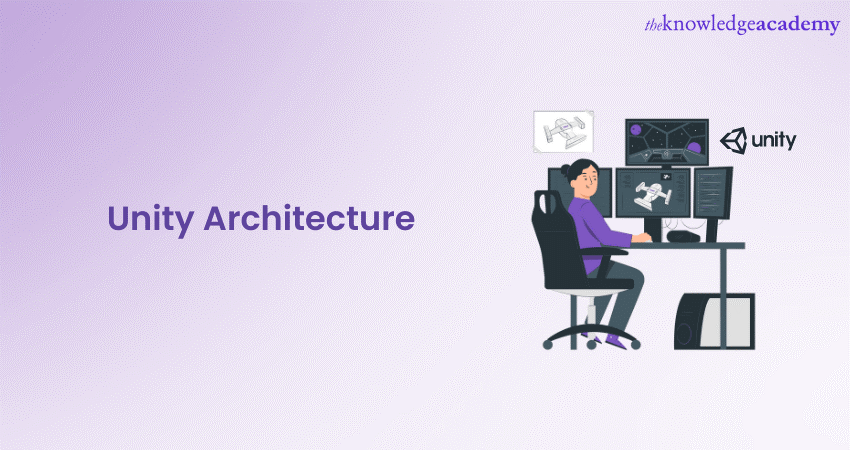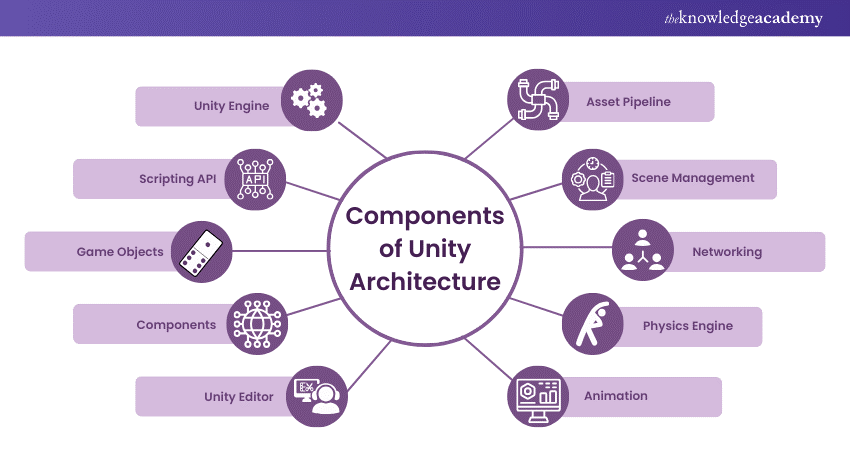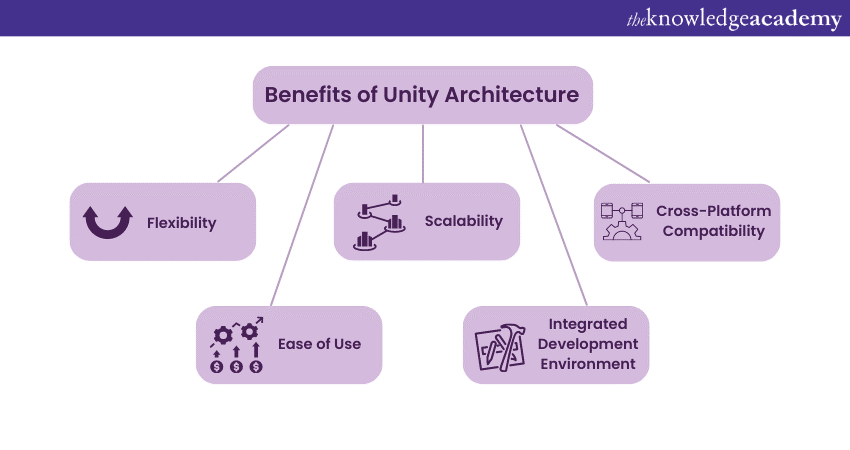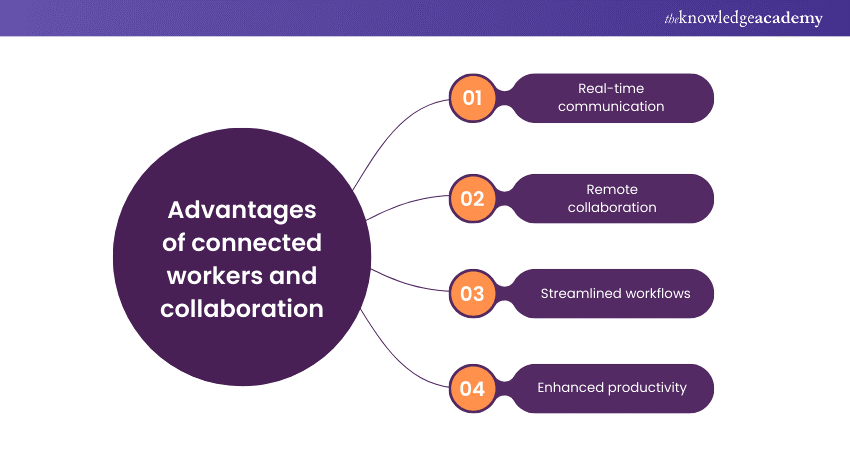We may not have the course you’re looking for. If you enquire or give us a call on +1 7204454674 and speak to our training experts, we may still be able to help with your training requirements.
We ensure quality, budget-alignment, and timely delivery by our expert instructors.

If you're curious about the fundamental building block of a Game Engine, it's essential to begin by grasping the concept of the Unity Engine. This Unity Engine serves as the foundation for comprehending Unity Architecture, which acts as a guide to comprehending the seamless functionality of a Game Engine.
As a powerful and versatile Game Development platform, Unity has transformed the way developers bring their gaming visions to life. With its user-friendly interface, robust tools, and an expansive community, Unity has democratised game creation, enabling both seasoned professionals and aspiring developers to craft immersive and captivating gaming experiences.
Let us now dive deep into this blog to uncover Unity Architecture, its components, and its benefits. Read below to know more.
Table of Contents
1) Understanding Unity Architecture
2) What are the components of Unity Architecture?
3) What are the benefits of Unity Architecture?
4) Top use cases of Unity Architecture
5) Conclusion
Understanding Unity Architecture
Unity Architecture refers to the underlying structure and organisation of the Unity Game Development. It encompasses the various components, systems, and processes that work harmoniously to create interactive and immersive gaming experiences. Understanding Unity Architecture is essential for Game Developers as it provides insights into how the engine's elements collaborate to bring virtual worlds to life.
The Unity Engine Architecture is comprised of the scripting API. The engine is responsible for fundamental tasks like rendering game scenes, managing physics simulations, and handling user inputs. While the scripting API allows developers to define and control Game behaviour.
The Unity Game Architecture involves the structure and organisation of the game within Unity. It defines how game objects (characters, obstacles, and interactive elements) and their attributes are set up and manipulated for gameplay. It is one of the most sought after game development tools by developers. Involving oneself with unity projects will prove to be beneficial to understand the unity architecture

What are the components of Unity Architecture?
Let us now discuss the components of Unity Architecture below:

a) Unity Engine: This is the backbone of Unity Architecture. It is responsible for executing Game scripts, rendering scenes, managing physics simulations, and handling user inputs.
b) Scripting API: Unity uses Primarily C# scripts for Game Development Process. The Scripting API enables developers to define and control the behaviour of game elements through scripts.
c) Game objects: These are fundamental entities within Unity. Each object represents a unique entity in the game world, such as a player, enemy, item, or environmental element.
d) Components: Attached to game objects, these define the behaviour and attributes of the game objects. Examples include scripts, rigid bodies for physics simulations, and renderers for visual representation.
e) Unity editor: This is the interface where developers create and manipulate game scenes, inspect and modify game objects and their components, and set Game properties.
f) Asset pipeline: Unity has an integrated asset pipeline for importing a wide range of asset types, including 3D models, textures, audio clips, and more. This is a critical component of Unity's Architecture.
g) Scene management: Unity organises the content of a game into scenes. Each scene contains a collection of game objects that together form a level or a part of a game.
h) Networking: Unity provides a networking framework that allows for multiplayer Game Development, allowing game objects to interact over a network.
i) Physics engine: Unity comes with a built-in physics engine, which calculates and simulates physical interactions between game objects.
j) Animation: When Compared to Unity vs Unreal Engine, Unity's animation system allows for the creation of complex animation sequences. This allows developers to createmore dynamic and visually engaging games.
Learn about Game Design with our course on Game Design And Development With Unity Training.
What are the benefits of Unity Architecture?
Unity Architecture comes with numerous advantages that make it a preferred choice among Game Developers. So, if you want to Become a Game Developer or thinking about exploring this industry, here are some of the benefits of Unity Architecture:

a) Flexibility: The modular nature of Unity Architecture allows developers to easily add, modify, or remove Game objects and components, enabling them to create games with diverse complexity levels and types.
b) Scalability: With Unity Architecture, games can be scaled up or down to accommodate different levels of complexity, from simple mobile games to more intricate PC and console games.
c) Cross-platform compatibility: Unity Architecture supports cross-platform development, which means games can be created once and deployed across multiple platforms, including Windows, iOS, Android, Mac, Linux, PlayStation, Xbox, and more.
d) Ease of use: The Unity Editor offers a user-friendly interface and powerful visual scripting tools, simplifying Game Development and making it accessible even to beginners.
e) Integrated Development Environment: Unity provides an all-in-one platform for Game Development, from scripting in unity and asset management to testing and deploying, all within the same environment.
Learn about Video Game Development with our Unreal Engine 4 Game Development Training.
Top use cases of Unity Architecture
From training simulations to predictive maintenance, there are many use cases of Unity Architecture. Here are some of them:
Operational twin
Operational twin, a concept involving a digital counterpart of a physical system or process, finds a powerful ally in Unity. With Unity, organisations can accurately create intricate 3D models containing complex machinery and industrial infrastructure. These digital twins bring forth a host of advantages. Let's explore some of them below:
1) Visualisation: Unity empowers engineers and operators to visually grasp intricate systems, aiding in comprehension and analysis.
2) Interactivity: Digital twins created with Unity become interactive, enabling hands-on exploration and potential operational enhancements.
3) Reduces downtime: Real-time Data Analysis within Unity's digital twin predicts maintenance needs, reducing downtime.
4) Process optimisation: Unity's precision identifies operational inefficiencies, paving the way for targeted improvements.
5) Data-driven decisions: Unity equips organisations to make informed, data-backed choices, ultimately enhancing productivity and efficiency.
Smart engineering
In today's competitive landscape, smart engineering is vital, and Unity plays a crucial role in it. Unity empowers organisations to adopt smart engineering practices, revolutionising how systems and processes are designed, analysed, and improved. Here are the key benefits of smart engineering with Unity:
1) Creative design: Unity enables engineers to create detailed 3D models. Moreover, it aids in fostering innovation in the design phase, resulting in better product development.
2) Real-time simulations: Engineers can use Unity for dynamic real-time simulations, allowing them to explore different scenarios and refine designs without the need for physical prototypes.
3) Team collaboration: Unity's collaborative features facilitate teamwork among engineers, designers, and stakeholders, streamlining the engineering process.
4) Quick problem-solving: Unity helps engineers quickly identify and resolve challenges by visualising issues, implementing solutions, and assessing their impacts in real-time.
By integrating Unity into their engineering practices, organisations can enhance their capabilities. This leads to more efficient, innovative, and cost-effective engineering processes.
Predictive maintenance
Predictive maintenance uses Data Analytics to detect when equipment or machinery is likely to fail. Unity can be used to create 3D models of industrial assets and integrate them with Data Analytics platforms.
By visualising sensor data and equipment conditions in a virtual environment, maintenance teams can predict when maintenance is needed. This significantly reduces unplanned downtime and extends the lifespan of machinery.
Training
Unity is a valuable tool for creating immersive training simulations. For industries like manufacturing, aerospace, and healthcare, Unity can replicate real-world scenarios in a virtual environment.
This enables employees to undergo realistic training without exposing them to physical risks. Unity's interactive 3D simulations can teach complex procedures, safety protocols, and emergency response effectively, leading to better-trained and safer workforces.
Connected workers and collaboration
Unity fosters seamless connectivity among workers and enables collaborative efforts within organisations. Here are the key advantages of connected workers and collaboration through Unity:

1) Real-time communication: Unity facilitates real-time communication and collaboration among teams, ensuring that workers stay connected and informed.
2) Remote collaboration: Unity allows workers to collaborate remotely, breaking down geographical barriers and promoting efficiency.
3) Streamlined workflows: Unity's features streamline workflows, making it simpler for teams to work together on complex projects and share insights.
4) Enhanced productivity: With Unity, connected workers can access resources and expertise quickly, enhancing overall productivity and problem-solving.
Embracing Unity for connected workers and collaboration empowers organisations to adapt to the dynamic demands. Additionally, it helps in fostering innovation and efficiency in the workplace.
Environmental and operational performance
Unity can be used to create visualisations and dashboards that display real-time environmental and operational data. For instance, in the energy sector, Unity can represent complex energy production and consumption processes.
By visualising data related to emissions, energy efficiency, and resource usage, organisations can make informed decisions to reduce their environmental footprint. This helps them tremendously in optimising operational performance.
Overall, Unity and Unity Architecture find applications in various industries by providing immersive and data-driven solutions. These use cases not only improve operational efficiency but also enhance safety, collaboration, and decision-making in complex environments.
Conclusion
Unity Architecture plays a crucial role in Game Development as well in the game development process, offering a flexible, scalable, and user-friendly environment. Its components work in harmony to create visually appealing and dynamic games, supporting developers like you with a robust and efficient platform. Its cross-platform compatibility and performance optimisation are unmatched. This solidifies its place as a leading Game Development Engine.
Enhance your knowledge in Unity Game Engine Architecture with our guide on Gamification Training.
Frequently Asked Questions
What language is Unity built on?

Unity is primarily developed using the C# programming language. C# is a flexible and powerful language that allows Game Developers to create interactive and immersive experiences with ease. Unity's use of C# makes it accessible to various developers and provides a robust foundation for Game Development.
What is Unity software used for?

Unity software is widely used for various applications beyond Game Development. It is employed in fields such as architectural visualisation, Virtual Reality (VR), Augmented Reality (AR), simulation, and training. Additionally, Unity is utilised for creating interactive 2D and 3D experiences.
What are the other resources provided by The Knowledge Academy?

The Knowledge Academy takes global learning to new heights, offering over 3,000 online courses across 490+ locations in 190+ countries. This expansive reach ensures accessibility and convenience for learners worldwide.
Alongside our diverse Online Course Catalogue, encompassing 19 major categories, we go the extra mile by providing a plethora of free educational Online Resources like News updates, Blogs, videos, webinars, and interview questions. Tailoring learning experiences further, professionals can maximise value with customisable Course Bundles of TKA.
What is the Knowledge Pass, and how does it work?

The Knowledge Academy’s Knowledge Pass, a prepaid voucher, adds another layer of flexibility, allowing course bookings over a 12-month period. Join us on a journey where education knows no bounds.
What are related courses and blogs provided by The Knowledge Academy?

The Knowledge Academy offers various Game Development Courses, including Game Design and Development with Unity Training and C# Programming for Unity Game Development Training. These courses cater to different skill levels, providing comprehensive insights into. Unity Developer Skills & Techniques.
Our Programming & DevOps Blogs cover a range of topics related to Game Development, offering valuable resources, best practices, and industry insights. Whether you are a beginner or looking to advance your Unity Developer Skills, The Knowledge Academy's diverse courses and informative blogs have you covered.
Upcoming Programming & DevOps Resources Batches & Dates
Date
 Game Design and Development with Unity Training
Game Design and Development with Unity Training
Fri 11th Apr 2025
Fri 13th Jun 2025
Fri 8th Aug 2025
Fri 26th Sep 2025
Fri 21st Nov 2025






 Top Rated Course
Top Rated Course


 If you wish to make any changes to your course, please
If you wish to make any changes to your course, please


